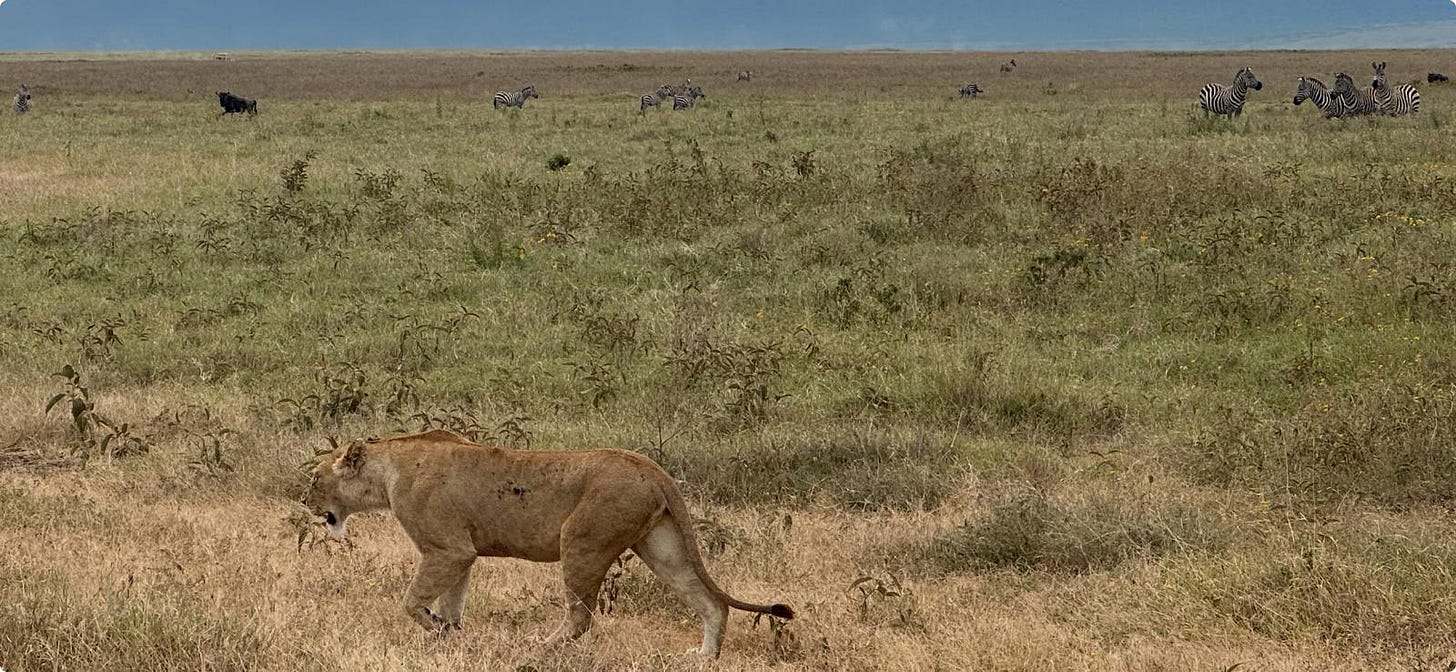By Peter A. McCullough, MD, MPH
The Ngorongoro (means ringing cowbells from Maasai language) Crater, a UNESCO World Heritage Site, was formed by a massive volcanic eruption and subsequent collapse, creating a large volcanic caldera. The eruption occurred about 2.5 million years ago, ejecting magma and ash, and the resulting collapse created a large depression, spanning over 260 square kilometers and reaching a depth of 610 meters,
It is likely that wildlife within the crater have their entire lifespan within this ecosystem. Our highlight was coming up on a solo lioness in broad daylight moving along the edge of a field and watch the reaction of a herd of zebras. With excellent eyesight, the zebras activated one another and formed a unified front to face the lioness traversing past them.
It was clear she was not hunting but it was also apparent that the zebras were ready to confront a single lioness. You will also notice our lioness looks to have taken a past horn to her left side serving as a reminder that each attack on prey is not without risk of injury or even death.
Our South African guide Andy Cook (shown playing drums with Tanzanites at a tourist trap) explained that if a hunting team of six or more lions were spotted, it would have been a different response from the zebras who would have hightailed it in the other direction!
Please subscribe to FOCAL POINTS as a paying ($5 monthly) or founder member so we can continue to bring you the truth.
Peter A. McCullough, MD, MPH
President, McCullough Foundation








